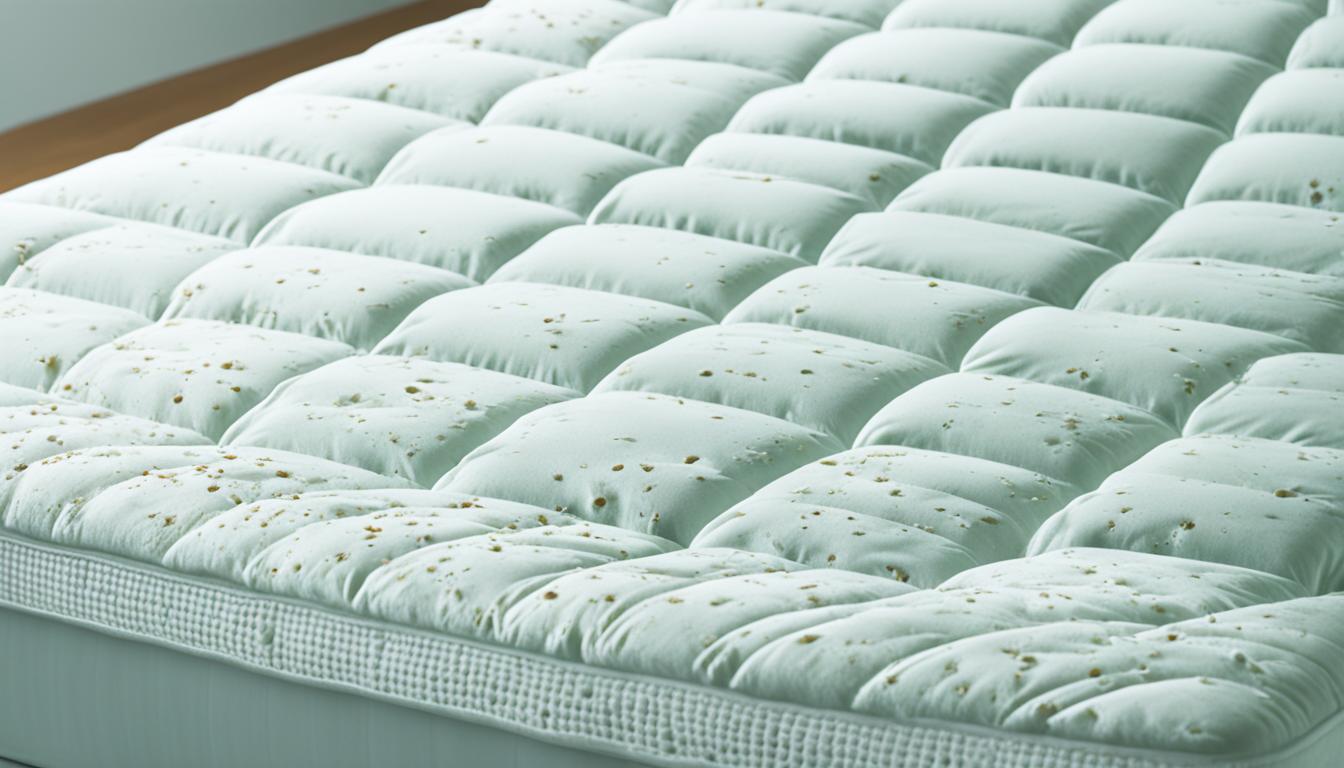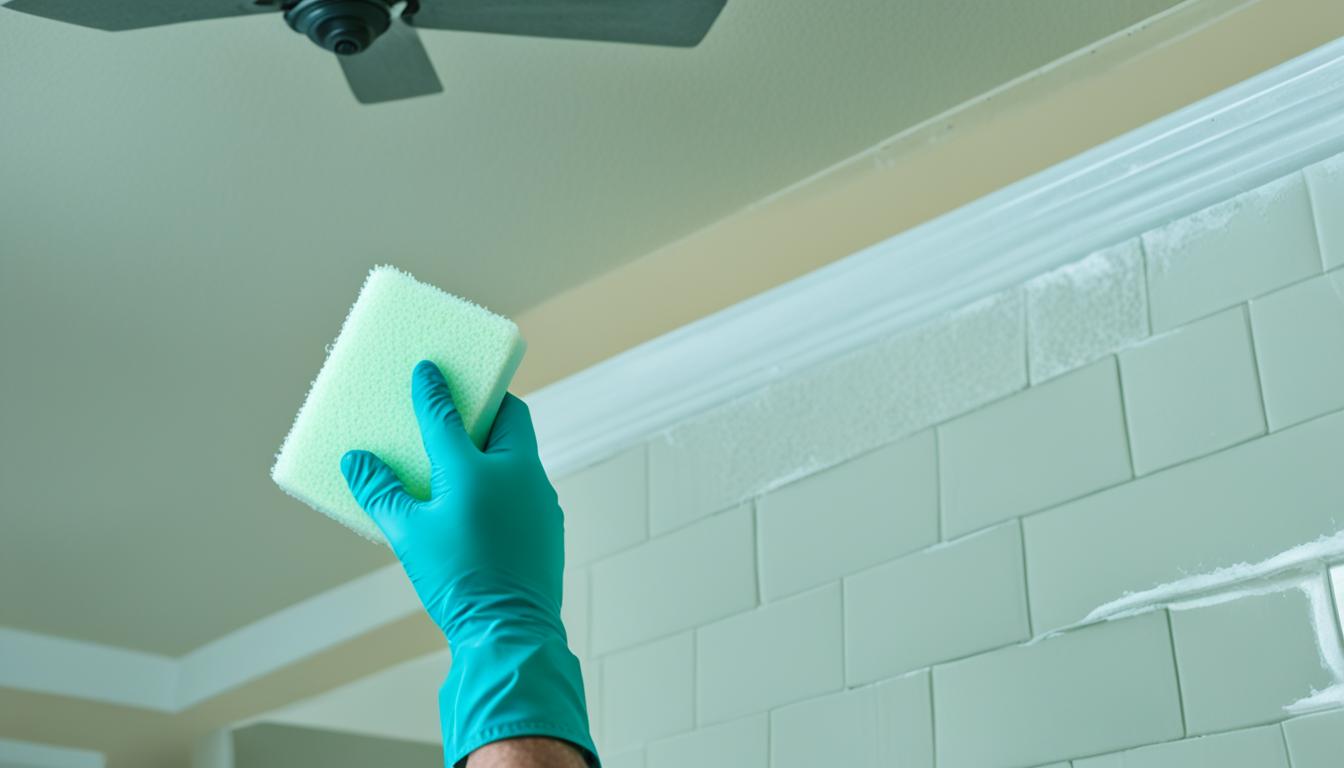Are you dealing with stubborn stains on your mattress? Don’t worry, we’ve got you covered. In this article, we will share effective mattress stain removal tips that can help you remove mattress stains even when your mattress is dry. Whether you spilled a drink, had a bedwetting accident, or encountered mysterious stains, we have the solutions you need.
Removing stains from a dry mattress may seem challenging, but with the right techniques and products, it can be done. We’ll walk you through step-by-step instructions on how to effectively clean and eliminate stains from your mattress without causing damage. Say goodbye to those unsightly stains and hello to a fresh and clean sleep surface.
How to Get Stains Out of a Mattress When Dry?
Different types of stains require different cleaning techniques. Here are some tips for removing specific stains from a mattress:
- Bedwetting accidents: Strip the bed and blot the mattress dry. For fresh stains, mix hydrogen peroxide, baking soda, and washing liquid and spray the stain. Cover with baking soda, let it sit, and vacuum it up. Alternatively, lightly spray the stain with a mixture of white vinegar and water, then sprinkle baking soda and vacuum.
- Bloody nightmares: Use cold water to dab at the stain and prevent setting. Apply hydrogen peroxide or lemon juice to the stain, then blot with a cloth. Alternatively, apply a few drops of laundry detergent directly onto the stain, then blot.
- Puddles of puke: Remove bedding and spray a solution of water and white vinegar onto the stain. Blot with a cloth and repeat if necessary. Sprinkle baking soda over the stain, let it sit, then vacuum.
- Freshly spilt wine: Dab sparkling water on the stain or pour salt on it to soak up the wine.
- Mystery mattress stains: Dilute washing-up liquid or white vinegar and spray it on the stain. Let it sit, then blot with a cloth. Repeat or try using a wet sponge and hydrogen peroxide.
- Seriously stubborn old stains: Use a steam carpet cleaner with an upholstery attachment to spot clean the mattress. Note that removing dried stains can be challenging, but it’s worth a try.
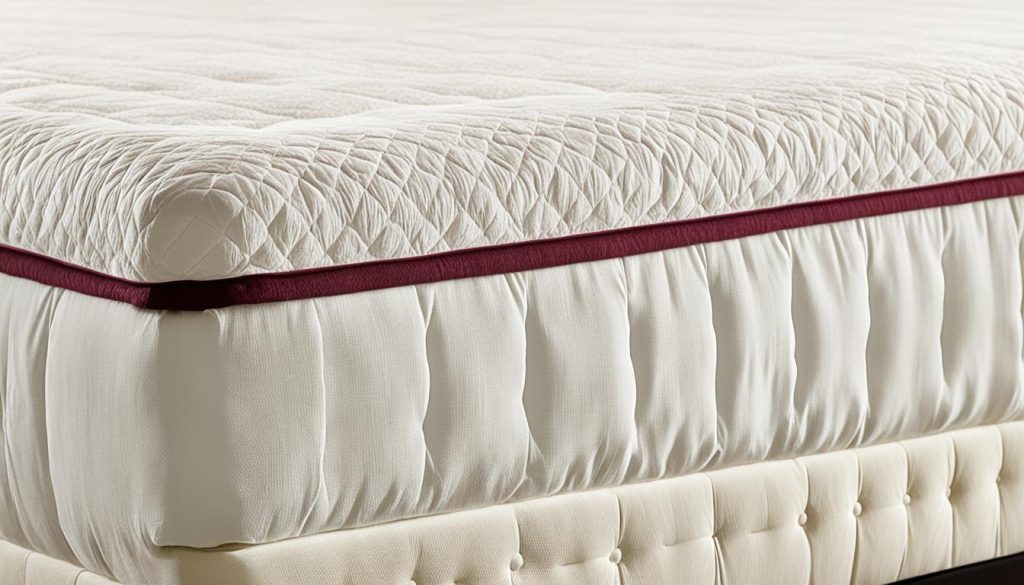
Removing stains from a mattress can be challenging, but with the right techniques and products, you can restore your mattress to its clean and fresh state. By following these tips, you can effectively tackle bedwetting accidents, bloood nightmares, puddles of puke, freshly spilt wine, mystery mattress stains, and seriously stubborn old stains. Remember to test cleaning solutions on small inconspicuous areas of the mattress before applying them to the stain.
Basic Mattress Care and Maintenance
Proper mattress care and maintenance are crucial for preserving its cleanliness and extending its lifespan. By following these basic mattress care tips, you can keep your mattress in excellent condition:
- Use a Mattress Protector: Investing in a high-quality mattress protector is an effective way to shield your mattress from spills, stains, dust mites, and allergens. It acts as a protective barrier, ensuring a clean and hygienic sleep surface. Simply place the mattress protector over your mattress and secure it tightly.
- Rotate or Flip the Mattress: To prevent uneven wear and sagging, rotate your one-sided mattress at least four times a year. If your mattress is two-sided, make sure to flip it as well. This distributes the weight and pressure evenly, prolonging the lifespan of your mattress.
- Hoover the Mattress: Regularly vacuuming your mattress is essential for removing dust, dirt, and allergens that can accumulate over time. Use the upholstery attachment on your vacuum cleaner to thoroughly clean the entire mattress surface. Be sure to pay close attention to areas near the headboard and seam lines.
- Follow Care Instructions: Every mattress is unique, and different materials require specific care. Always refer to the care label or instructions provided by the mattress manufacturer. These guidelines will give you valuable insights into the best cleaning and maintenance practices for your particular mattress. Some mattresses may have specific recommendations or restrictions that you need to follow.
- Regular Maintenance: Schedule regular maintenance for your mattress. Aim to give it a thorough vacuuming every six months, or more frequently if you or your family members have asthma or allergies. This helps remove dust mites, dead skin cells, and other allergens, ensuring a clean and healthy sleeping environment.
By implementing these basic mattress care tips, you can keep your mattress fresh, clean, and comfortable for years to come.
Dealing with Mattress Odors and Freshening Techniques
In addition to removing stains, it’s important to keep your mattress smelling fresh. Here are some techniques to deodorize and freshen your mattress:
- Baking soda: Sprinkle baking soda evenly over the mattress surface and let it sit for at least an hour. Baking soda acts as a natural deodorizer and absorbs odors. Vacuum up the baking soda after the designated time.
- Sleep inducing essential oils: Experiment with sleep-inducing essential oils such as chamomile, sandalwood, or lavender. Add a few drops of your chosen oil to the baking soda before sprinkling it on the mattress.
- Air out the mattress: Pull back your sheets and leave the mattress exposed to air for a while to allow for ventilation and freshening. Opening the bedroom window can also help circulate fresh air through the room.
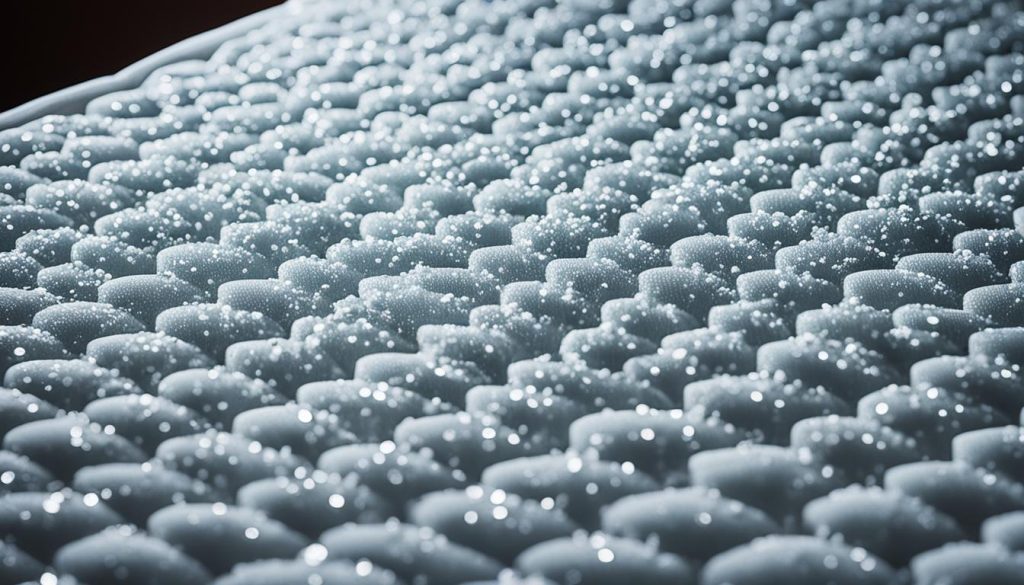
By using baking soda, sleep inducing essential oils, and allowing your mattress to air out, you can enjoy a fresh and inviting sleep environment. These techniques are easy to implement and can make a significant difference in eliminating mattress odors.
When to Consider Replacing Your Mattress?
While proper cleaning and maintenance can extend the lifespan of a mattress, there comes a time when replacement is necessary. Here are some signs that indicate it’s time to consider buying a new mattress:
- Stains and odors that are persistent and cannot be effectively removed. If your mattress has stubborn stains or lingering odors that you’ve tried to clean but just can’t seem to get rid of, it may be a sign that it’s time to replace it. These stains and odors can be caused by spills, accidents, or even the buildup of sweat and body oils over time.
- Sagging or indentation in the mattress, especially in the areas where you sleep. Over time, mattresses can develop sagging or indentations, especially in areas where you regularly sleep. This can affect the overall comfort and support of the mattress, leading to aches, pains, and poor sleep quality.
- Lack of support and comfort. If you find yourself waking up feeling achy or having trouble getting comfortable in your bed, it may be a sign that your mattress is no longer providing adequate support. Your mattress should support your body properly and allow you to achieve a comfortable sleeping position.
- Allergies or respiratory issues that are exacerbated by the mattress. If you suffer from allergies or respiratory issues that seem to worsen when you’re in bed, it could be a sign that your mattress is harboring allergens such as dust mites or mold. In these cases, replacing your mattress with a hypoallergenic option may bring relief.
- Mattress age. The average lifespan of a mattress is around 7-10 years, depending on the quality and usage. If your mattress is significantly older than this, it may be time for an upgrade. As mattresses age, their materials can deteriorate, leading to reduced support and increased wear and tear.
If you’re experiencing any of these signs, it’s worth considering replacing your mattress to ensure you have a comfortable and supportive sleep surface.
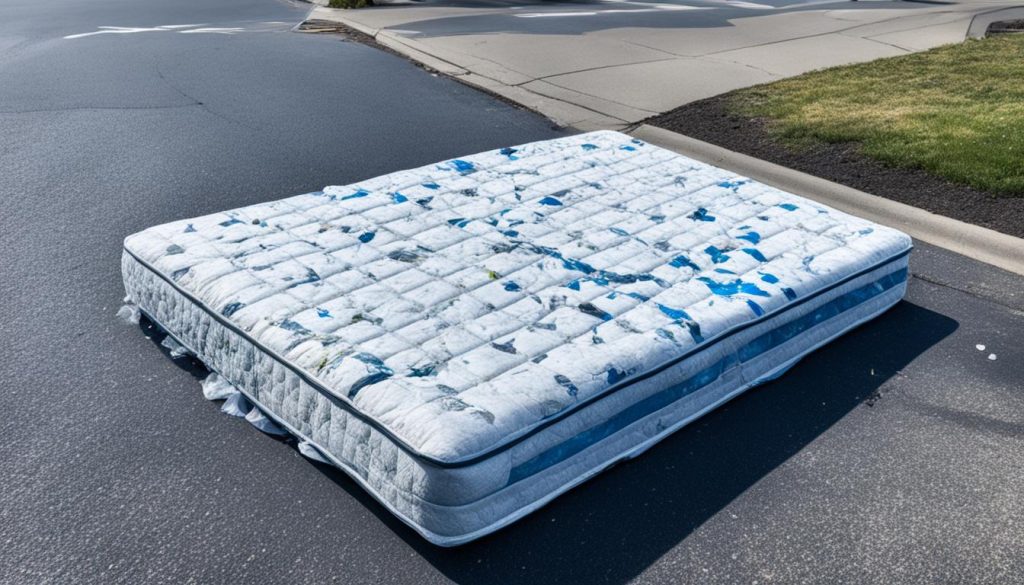
Tips for General Mattress Cleaning and Maintenance
In addition to spot cleaning stains, regular maintenance and cleaning of your mattress can keep it in good condition. Here are some general tips for mattress cleaning and maintenance:
- Vacuum the mattress: Regularly vacuum the mattress with the upholstery attachment to remove dust, dirt, and allergens. Pay attention to areas near the headboard and seam lines.
- Spot clean spills promptly: Whenever spills or accidents occur, clean them up as soon as possible to prevent stains and odors from setting.
- Air out the mattress: Remove the bedding and let the mattress breathe by exposing it to fresh air. This can help eliminate any trapped odors and moisture. Partnered with cleaning, this can contribute to a clean and fresh mattress.
- Follow manufacturer’s instructions: Read and follow the care instructions provided by the mattress manufacturer to ensure proper cleaning and maintenance. Each mattress may have specific recommendations. Keeping your mattress clean and well-maintained is crucial for its longevity.
- Consider professional cleaning: If your mattress requires a deep clean or if you’re unable to remove stubborn stains, consider hiring professional mattress cleaning services. They have the expertise and equipment to thoroughly clean and sanitize your mattress, giving you peace of mind and a fresher sleep environment.
Regular cleaning and maintenance of your mattress not only help prolong its lifespan but also contribute to a healthy and hygienic sleeping environment. Keep these cleaning tips in mind to ensure a clean and comfortable mattress for years to come.
Conclusion
Proper cleaning and maintenance are essential for keeping your mattress in good condition and prolonging its lifespan. By following the tips and techniques mentioned in this article, you can effectively remove stains from a dry mattress and maintain a clean and comfortable sleep environment.
Remember to always test cleaning products on small patches before applying them to the entire mattress. This will help prevent any potential damage or discoloration. Additionally, be sure to adhere to the care instructions provided by the mattress manufacturer.
If stains persist or the mattress is beyond repair, it may be time to consider replacing it with a new one. Investing in a quality mattress is crucial for getting a good night’s sleep and ensuring proper support for your body.
Take the time to clean and care for your mattress regularly, and you’ll enjoy a fresh and comfortable sleeping surface for years to come.
FAQ
How do I remove bedwetting accidents stains from a mattress?
For fresh stains, mix hydrogen peroxide, baking soda, and washing liquid. Spray the stain, cover with baking soda, and vacuum after it sits. Alternatively, lightly spray the stain with a mixture of white vinegar and water, sprinkle baking soda, and vacuum.
What’s the best way to remove blood stains from a mattress?
Use cold water to dab at the stain to prevent setting. Apply hydrogen peroxide or lemon juice, then blot with a cloth. Alternatively, apply a few drops of laundry detergent onto the stain and blot.
How can I remove puddles of puke stains from a mattress?
Remove bedding and spray a solution of water and white vinegar onto the stain. Blot with a cloth and repeat if needed. Sprinkle baking soda, let it sit, then vacuum.
What should I do if there’s a freshly spilt wine stain on my mattress?
Dab sparkling water on the stain or pour salt on it to soak up the wine.
What can I do about seriously stubborn old stains on my mattress?
Use a steam carpet cleaner with an upholstery attachment to spot clean the mattress. Note that removing dried stains can be challenging, but it’s worth a try.
How can I deodorize and freshen my mattress?
Sprinkle baking soda over the mattress surface and vacuum it up after an hour. Add sleep-inducing essential oils to the baking soda for a fresh scent. Air out the mattress by exposing it to fresh air and opening the bedroom window.
When should I consider replacing my mattress?
It’s time to consider buying a new mattress if there are persistent stains and odors that can’t be removed, sagging or indentation, lack of support and comfort, allergies or respiratory issues, or if the mattress is significantly older than 7-10 years.

